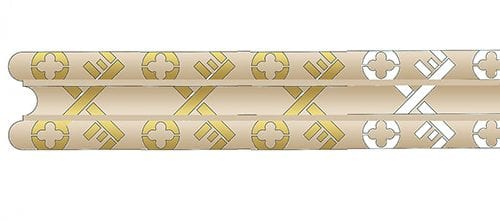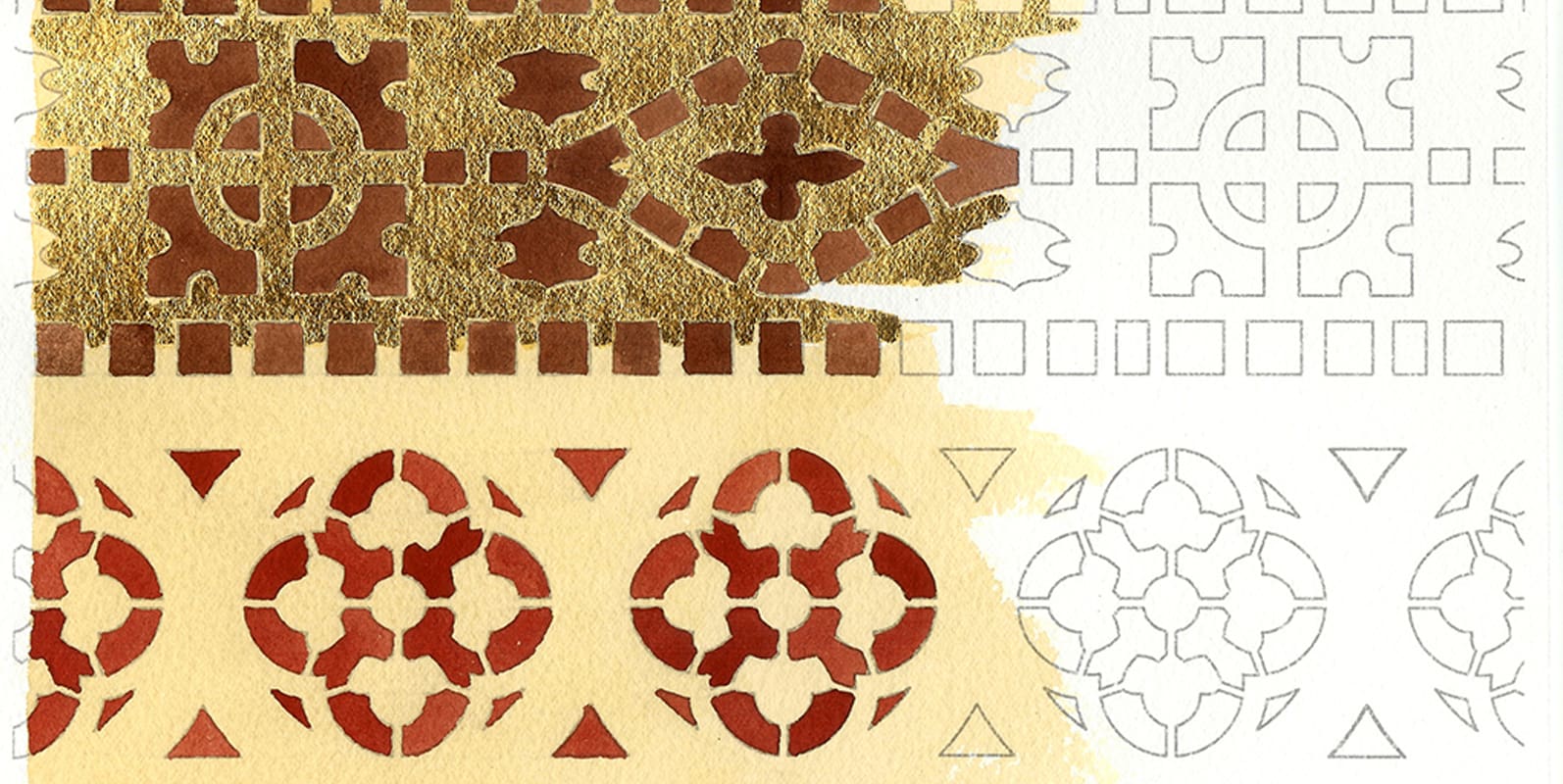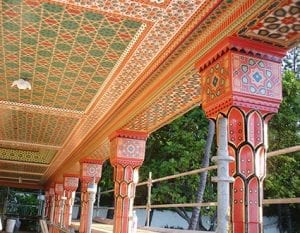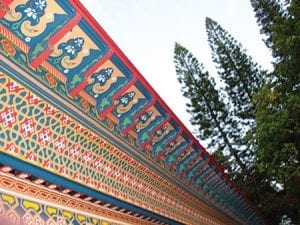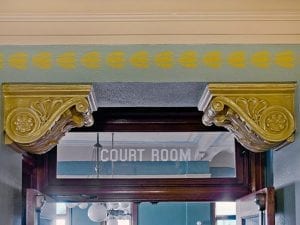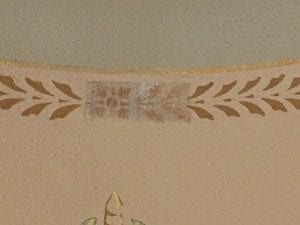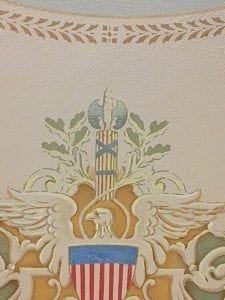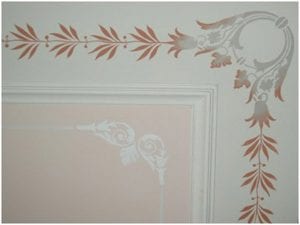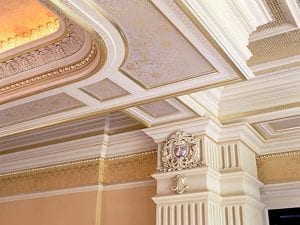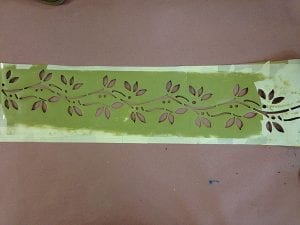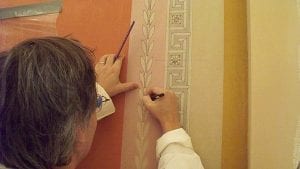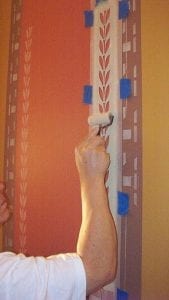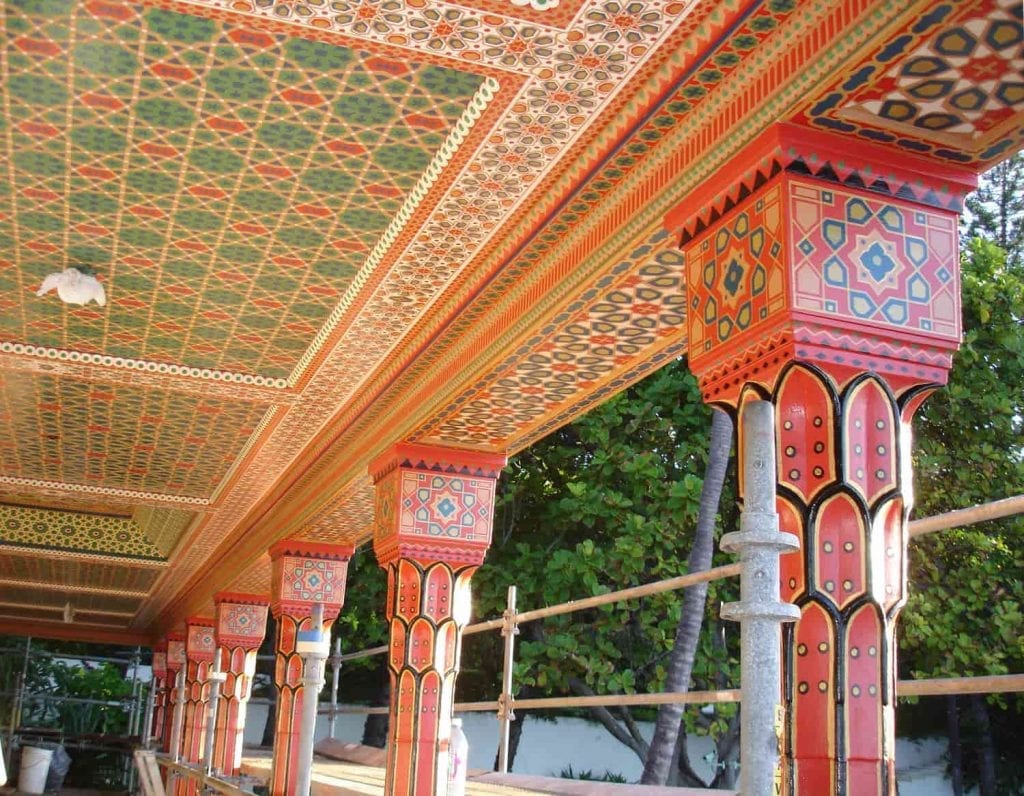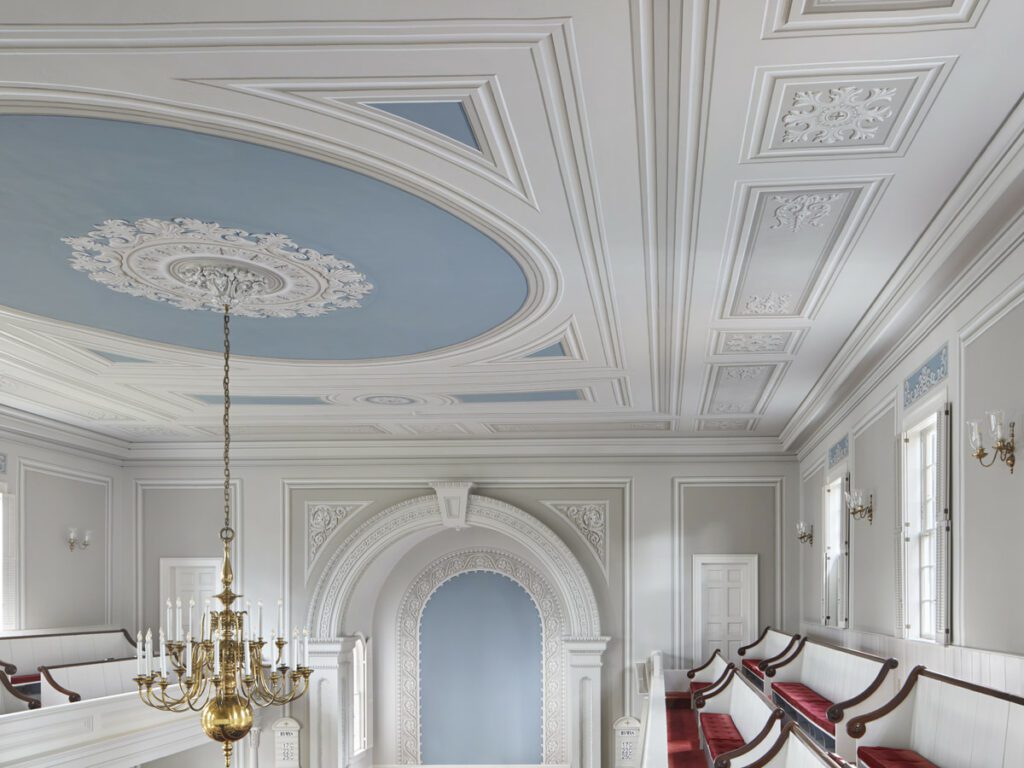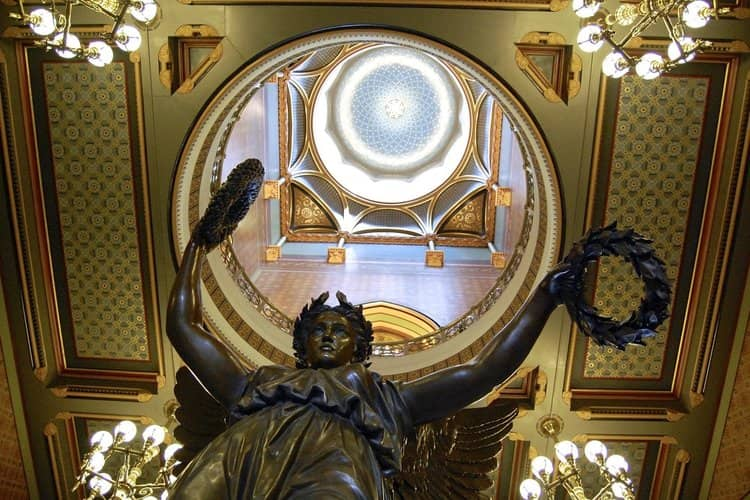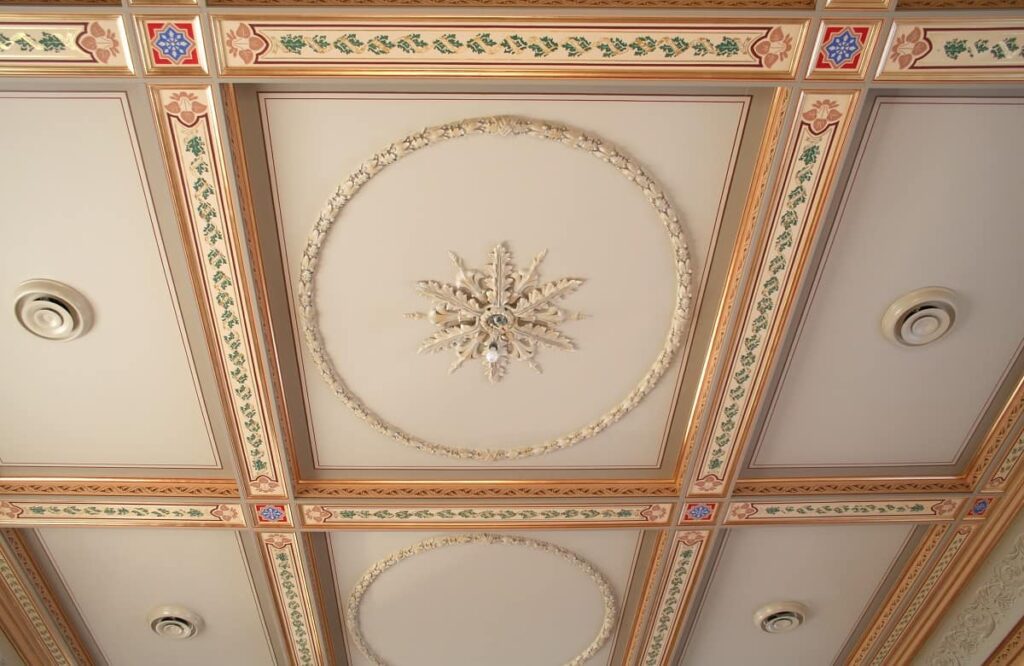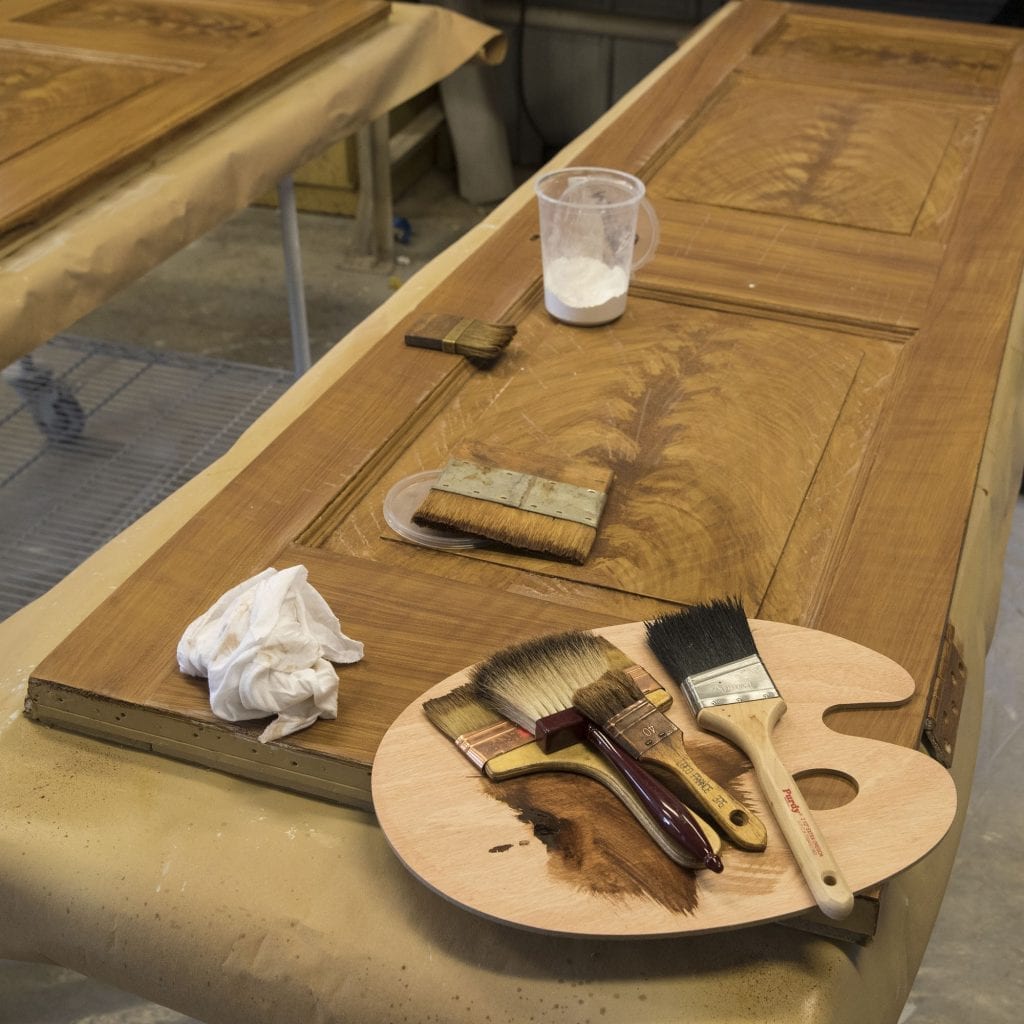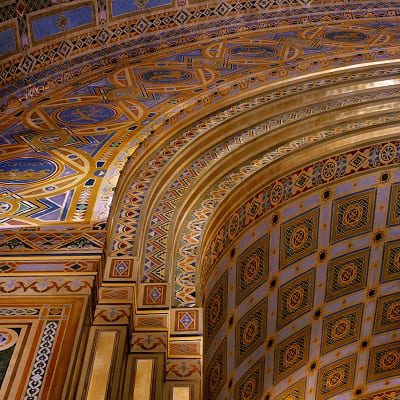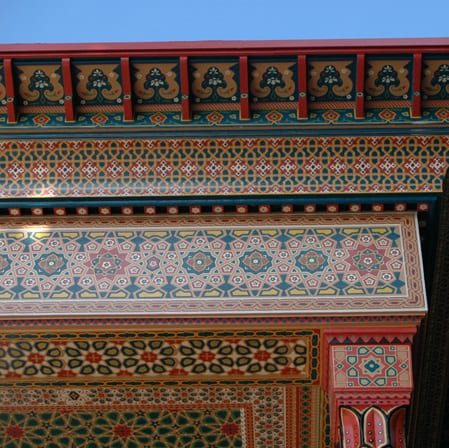The use of stencils in historic interiors is a common decorative finishes technique. Stencils have been used to help reinstate and create decoration for historic structures all around the world.
What is Stenciling?
Stenciling is a decorative finish technique used to produce and exactly replicate a design or pattern. The image or pattern is created by applying paint to a surface by using the stencil to apply a design to a surface through cut designed openings. The openings allowing the paint to reach the desired parts of the surface determined by the stencil design.

Why was Stenciling used in Historic Interiors?
The stencil is an age old tool and an ancient craft. The stenciling art form originated in various areas at different times and for different purposes.
One of the greatest impacts in decorative arts in the 1800’s was Owen Jones. Jones put together the key principles for the decorative arts, in The Grammar of Ornament. The Grammar was influential in design schools in the latter half of the nineteenth century, and is still in print and remains one of the most influential decorative ornament books.
Owen Jones principle regarding beauty in architecture states it can result in a “repose which the mind feels when the eye, the intellect, and the affections are satisfied, from the absence of any want.” Owen Jones has provided a source for painted decoration from all periods and styles, nothing added or nothing taken away.
Even though stenciling became more known and common in the 1800s, the technique has been around since the 5th century. Almost all cultures use or have used a method of stencil design on objects, artwork or architecture.
In the first half of the 19th century stenciling techniques and patterns of designs on walls were often used to mimic wallpaper. Besides walls, stenciling was also used on ceiling and floors imitating different decorative designs.
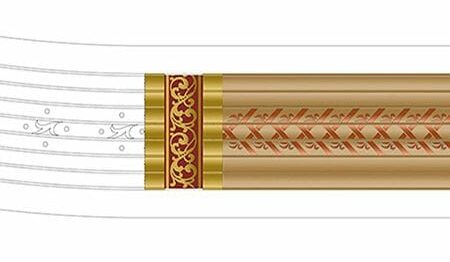
Examples of buildings that often include stenciled surfaces
When it comes to historic interiors, stencil patterns can be found throughout all types of structures such as houses, civic buildings, museums, churches and theaters. A few examples of stenciling in buildings include:
Doris Duke’s Shangri La, Center for Islamic Arts and Cultures built in 1936 is an example of a museum that uses stenciling. The original Shangri La decoration was stenciled directly onto the wood columns, moldings, panels, and architectural details.
Grant County courthouse built in 1906 used stencils throughout. Based on our findings we restored the finishes and decorative painting which included reinstating the historic color palette and stenciling throughout the 2nd floor corridors and courtroom.
The First Church of Christ, in Boston Massachusetts was built in 1894. The stenciling throughout was carefully documented and each color custom matched when we worked on this project.
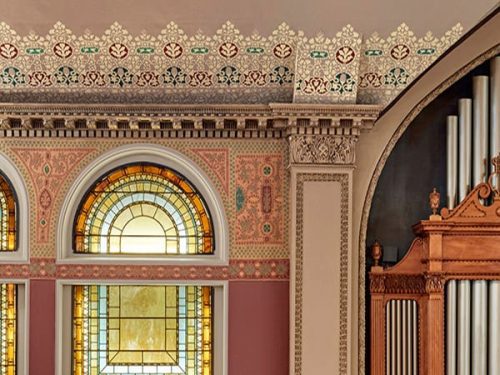
Built in 1878, the CT Capitol Senate Chambers is an example of a civic building were stenciling has been used. When we work on that restoration project, we needed to create new stencil patterns. The new stencils were designed similar to the many intricate ones already located throughout the building. The decoration of the CT State Capitol is of the Aesthetic Movement in style and originally designed by William McPherson.
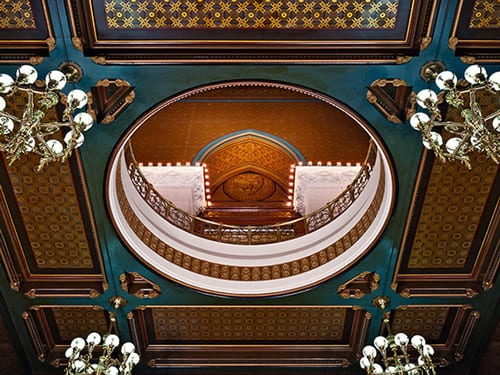
New Hampshire Residence Work included the design and execution of decorative finishes, both stenciled and freehand, on the ceiling and acanthus frieze.
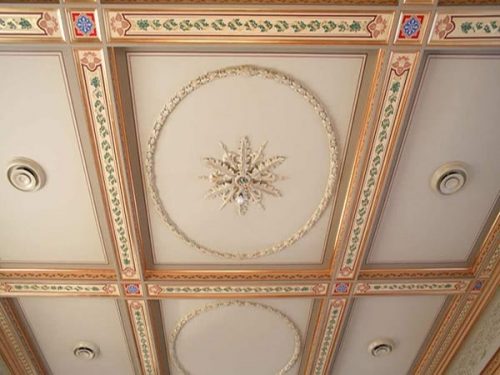
English Rose Residence, Work included the design and execution of decorative finishes on walls and ceilings throughout this exquisite private home, including trompe l’oeil, stenciling, glazing, and gilding.
Where is stenciling commonly found in historic interiors?
Stenciling was one of the early forms of interior decoration and could be found many places.
- Full wall coverage using stencils to mimic wallpaper
- Borders on walls
- Ceilings
- Floors or floor clothes to imitate carpet
- Furniture
- Stained Glass
- Canvas and other fabrics
How was it achieved?
The actual stencil can be created by using a thin sheet of material to replicate the art when paint is transferred through the opening. The stencil material can vary in form and be made from paper, mylar, plastic, or metal etc.
The art work in stencils can range from simple lettering and basic patterns to the very ornate and complex multi-layer designs. Multi-layer designs require using a different color stencil plates for each color of the design. Each one of these stencil plates that will be used needs to have registration points so that they line up correctly.
But no matter the complexity, the process to create the stencil starts with the existing design being traced to get the pattern that will be used to replicate the artwork for a stencil.
New designed artwork is sometimes created if an exact design is unknown or if a new art design needs to be added or incorporated into the existing decorative style.
Before any stencil pattern is traced the surface needs to be cleaned with an approved cleaning method. Then the existing stencil is traced and a stencil pattern is prepared on the appropriate material. Once a stencil is made, the design is cut and then that pattern can easily be used in the decorative process. It can be traced into place on the walls, canvas or other material. After the stencil pattern has been traced onto the appropriate surface the inpainting of the patterns can take place matching the original colour palette.
Stenciling is just one of many decorative design tools and techniques that is use to help reinstate and create decoration for historic structures. When it comes to reinstating art work, stencils can be used and can be a perfect tool if a decorative pattern or design that exists or has been discovered during a finish exposure investigation and needs to be reinstated or replicated. Stenciling is best used to decorate in quantity as well as quality. Stenciling offers a practical method for producing elegant designs.
